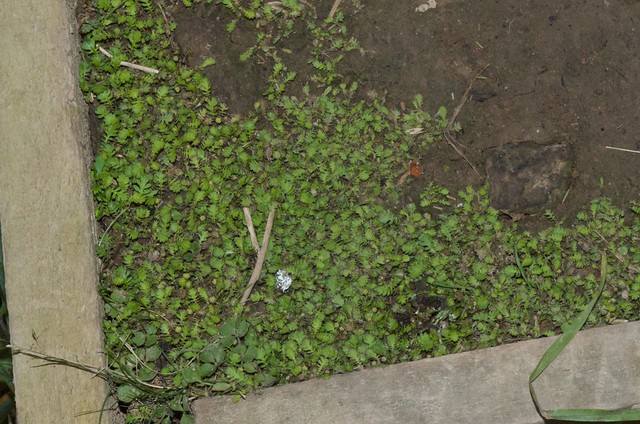RECENT ARTICLES
- CEBRA: An optimised and standardised sampling protocol for BioBlitz
- Stop it people, the plural of anecdote IS data!
- That's no pollinator, that's a flower visitor
- Add a scale to your macro photos
- What to photograph when counting the wild
- Imagine counting the wild on EVERY street in a city!
- My wild counting workflow
- A butterfly flew through
- Why iNaturalist observations without photos can be research grade
- Why you shouldn’t use a spreadsheet for data entry
- All articles ...
A rare plant flowering in the Christchurch Port Hills
A nationally critical, threatened NZ plant that requires frequent disturbance to persist.
written Dec 31, 2014 • by Jon Sullivan • Category: Wild Changes

One of the rare plants in Christchurch is Leptinella nana. I got to see it in flower this month in the Port Hills, and I also saw it in September with Christchurch botanist Melissa Hutchison, when it was still not yet in flower bud. Colin Meurk commented on one of my iNaturalist NZ observations that this is “reputedly the smallest ‘sunflower’ in the world”. As you’ll see from the photo below next to a NZ 20 cent coin, it’s a tiny plant. (For international readers, the coin is 21 mm across. For American readers, that’s 13/16th of an inch.)
The species is listed as “Threatened - Nationally Critical” in the 2012 conservation assessment of NZ plants. The species is only known from one site in the North Island and two sites in the South Island. One of the South Island sites is in Marlborough and the other is on Mt. Pleasant in the Christchurch Port Hills. See the NZPCN fact sheet for more details.



Leptinella nana is found growing in places along the track side up on the damp and shaded south side of Mount Pleasant. In these areas, it appears to be dependent on disturbance to maintain suitable open areas for it to grow without getting overrun by taller competitors like exotic grasses. Where it’s present, it’s doing well and is quite common.
Why this species is so rare, both nationally and in the Port Hills, is not clear. It’s a very small plant, and easily overtopped by taller, fast growing herbaceous plants. There are an enormous number of naturalised plants (weeds) that now fall into this category. The NZPCN fact sheet note that European slugs can be an issue for these plants in cultivation. That could also be the case in the wild, although I didn’t see any obvious signs of herbivory up on Mount Pleasant when I visited. It would be well worth some careful study, especially on how weeds and trackside disturbance are affecting its success.